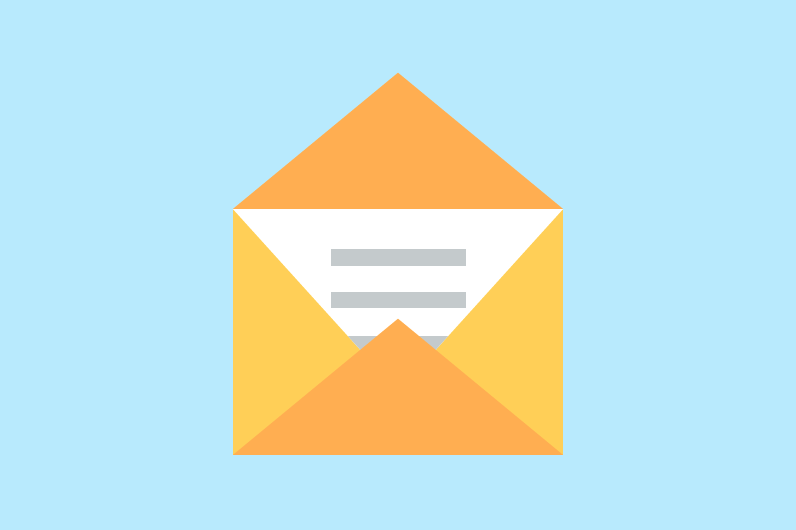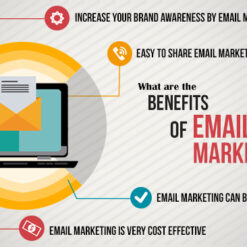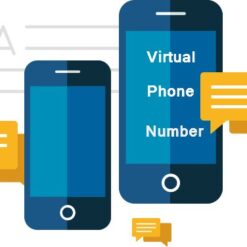Buy Email Newsletter, Newsletter, Newsletter Design, Newsletter Formats, Newsletter examples
₹ 1,000.00 Original price was: ₹ 1,000.00.₹ 100.00Current price is: ₹ 100.00.
100% Genuine & Authentic Services
13 Years Old Digital Marketing Agency Since 2012
10,000+ Happy Customers Since 2012
30 Days 100% Money Back Guarantee. No Questions Asked.
24x7 WhatsApp Support Customer Care
100% Safe Payments via UPI
1000+ Combined Positive Reviews on Internet
What is the purpose of a newsletter?
Newsletters are one of the most powerful digital marketing tools at your disposal since they let you communicate directly with your prospects and customers in a personalized way by serving valuable content and relevant promotions straight to their inboxes.
Newsletters are better suited to educating and entertaining your subscribers than they are for making a sale. Receiving a newsletter should feel like getting an update from an interesting and helpful friend rather than a hard sell from a pushy salesperson.
That’s not to say that you should only use newsletters to keep in touch with your subscribers.
Ideally, your newsletter will motivate your readers to take some form of action, such as:
- Read your latest blog post
- Sign up for an upcoming event
- Check out a new case study
- Take part in a prize draw or giveaway
- Buy something from your online store
How effective are newsletters for growing your business?
As the go-to tool for virtually all email marketers, email newsletters can accelerate your business growth if done correctly.
When you make a habit of sending subscribers personalized updates that add genuine value to their lives, your business begins to reap some invaluable rewards. You build more and more trust in your brand, you bolster your reputation as a thought-leader in your field, and you improve your odds of being top-of-mind whenever your audience considers buying something in your business category.
Put simply, the more your audience trusts that you understand their needs, the happier they’ll be to do business with you.
These stats give a sense of just how popular and effective email marketing and newsletters have become:
- For every dollar you spend on email marketing, you’ll get a $36 return on average – more than any other channel. (Litmus)
- 31% of B2B marketers say that sending email newsletters is the best way to nurture leads. (Content Marketing Institute)
- 49% of consumers are happy to receive promotional emails from the brands they love on a weekly basis. (Statista)
Another often overlooked benefit of having an email list is that you have complete control over it. This means you won’t suddenly lose access to your subscribers so long as you continue to deliver the value they signed up for through your newsletter and other messages.
What should be in a newsletter?
Newsletters can be used for various purposes and come in many different forms – there’s really no limit to how you can use them. For example, your newsletter could contain anything from:
- Weekly content digests
- In-depth guides or ebooks
- Recent interviews with industry experts
- Case studies and testimonials
- News about upcoming sales, promotions, and deals
That said, you should approach every newsletter with the explicit intention of providing your audience with immediate value. You’ll soon outstay your welcome if it seems like you’re sending emails to your subscribers just for the sake of it.
Remember that the whole point of a newsletter is to keep subscribers connected, engaged, and informed about what’s new in your business or industry. But it’s unlikely that all of your subscribers share the same needs and interests, so you should consider sending different kinds of updates to different segments of your subscriber list.
For example, a parent who works full time may prefer to get a super concise email, while someone who’s retired may have more time to read through a longer message. Personalizing your newsletters in this way will ensure your readers only receive the information that’s most relevant to them, which, in turn, will improve your engagement and conversion rates.
As for specific elements that you should include in your newsletter, an eye-catching subject line and a strong call-to-action (CTA) are essential. You should also ensure that your messages follow a clear and consistent format, and always give your readers the option to easily unsubscribe if they want to.
How long should a newsletter be?
Some research suggests that the ideal length for a newsletter is about 20 lines of text, or at most 200 words. But in reality, there’s no magic number that will guarantee a high click-through rate.
The truth is only patience and testing will let you figure out what length works best for your specific audience. But that’s good news! Any marketer looking for a golden ticket based on some so-called optimal word count is out of luck, which means less competition for those of us who are willing to put in the time and do the work.
The appropriate length for your newsletter will depend on your subscribers’ preferences, which, as we mentioned previously, may vary from segment to segment. You don’t have to send the same newsletter format to everyone.
But the right length will also depend on the specific content of your newsletter and what actions you’re asking your readers to take. For example, if you’re encouraging subscribers to RSVP to an event, they’ll probably need enough information to help them decide if it’s right for them. So your newsletter email might contain several sections, including bios of the featured speakers or artists, information on the event’s purpose, venue details, and so on. Meanwhile, a newsletter email inviting readers to check out your latest blog series can probably get by with minimal copy.
Ultimately, however, the best way to work out the ideal length for your newsletter and optimize for other crucial metrics in your email campaigns is to run some email A/B tests.
Dive deeper into newsletters
Understanding the effectiveness of email newsletters is essential if you want to grow your business. They are an invaluable tool for developing your email list, converting subscribers into customers, and building trust and loyalty with your audience.
Now that you know what newsletters are and how they can help your business, it’s time to get to work and incorporate them into your own marketing strategy.
Enjoy, and happy sending!
Be the first to review “Buy Email Newsletter, Newsletter, Newsletter Design, Newsletter Formats, Newsletter examples”
You must be logged in to post a review.
Related products
$1 Services






Reviews
There are no reviews yet.